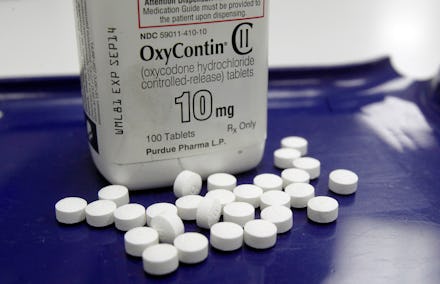Why Are Opioids Addictive? The Science Behind the Drugs

Opioid addiction is a growing problem in the U.S. — so grave that President Barack Obama recently proposed $1.1 billion in funding to combat it. But what exactly is behind the rise in opioid use, and why are opioids so addictive?
What are opioids? Opioids are a class of drug that serves as relief for moderate to severe pain. They include heroin as well as some prescription painkillers like those that contain oxycodone and codeine. According to the CDC, which uses the word "epidemic" to describe the recent surge in heroin use, the number of U.S. heroin-related deaths "nearly quadrupled" between 2012 and 2013. And 45% of heroin users are also addicted to prescription opioid painkillers.
Read: Opioid Addiction Has Obama's Eye and a $5M Super Bowl Ad — These Disturbing Stats Show Why
Why are opioids so addictive? "When heroin is taken into the body — either by inhalation, nasal or intravenously — it ultimately will enter the blood circulation and make its way to the brain, where the drug is converted to morphine," Dr. William D. Stanley, medical director of Serenity at Summit Behavioral Health, told Mic in early February.
Once heroin reaches the brain, it binds to receptors which then produce dopamine, triggering "sensations of pain relief, pleasure and euphoria," Stanley told Mic. "Clients have described the high as imagining your happiest moment and multiplying it by 5, 10, 15." Prescription opioid painkillers function the same way.
Over time, people who use opioids need larger and larger doses to get high, because the body can quickly develop a tolerance to the drug. As Vox reported, the risk of overdose on opioids grows "as people use opioids longer, since they develop a tolerance for the painkilling effects but not the overdose causes."
Chronic use of opioids can actually change the brain. According to a 2002 study on opioid dependence, "Brain abnormalities resulting from chronic use of heroin, oxycodone, and other morphine-derived drugs are underlying causes of opioid dependence (the need to keep taking drugs to avoid a withdrawal syndrome) and addiction (intense drug craving and compulsive use)."
The negative side-effects of withdrawal can also be a barrier to treating opioid addiction. According to the Stanford Daily, "Physical effects of opioid withdrawal include vomiting, diarrhea and nausea, while emotional effects include anxiety, depression and irritability. Many addicts continue drug use to eliminate the pain."
The physical effects of opioid dependence can ease with time, but, according to the 2002 study mentioned above, "the abnormalities that produce addiction, however, are more wide-ranging, complex, and long-lasting ... Such abnormalities can produce craving that leads to relapse months or years after the individual is no longer opioid dependent."
Along with the nature of opioids, one that makes them highly addictive and prone to causing overdoses, these drugs are also widely available, according to the Centers for Disease Control and Prevention, especially in some parts of the U.S. The number of prescriptions of painkillers per 100 people in some states are more than triple that of other states. It's no surprise then that opioids have such potential for abuse.
Support for those struggling with opioid addiction can be found at DrugFree.org or by calling 1-855-378-4373